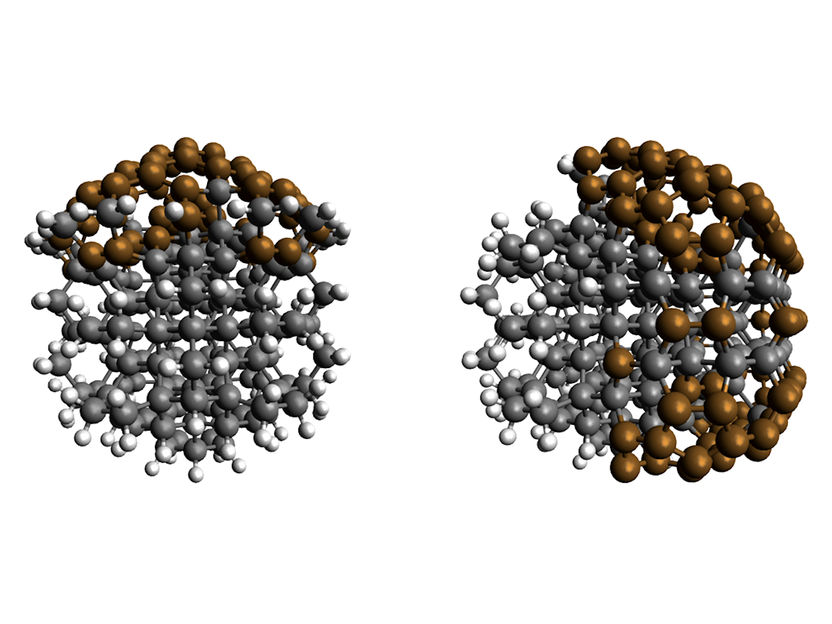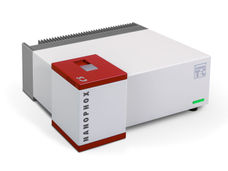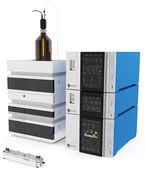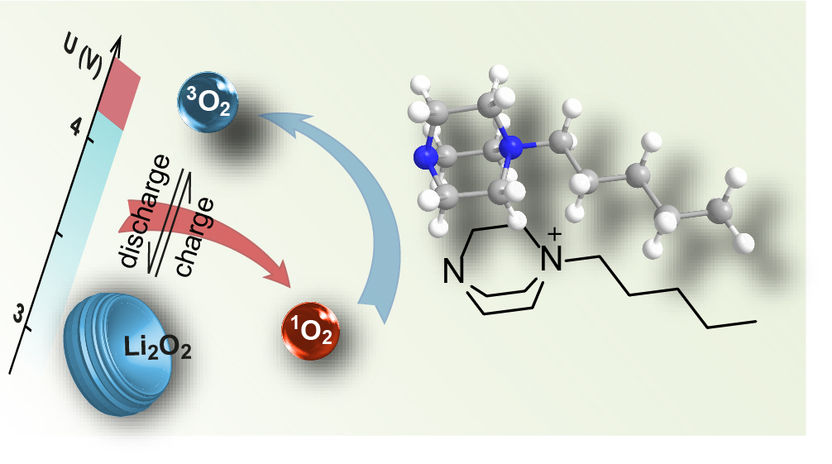Nanodiamonds can be activated as photocatalysts with sunlight
These inexpensive materials could be a key to further processing CO₂ into valuable hydrocarbons with sunlight in the future
Nanodiamond materials have potential as low-cost photocatalysts. But until now, such carbon nanoparticles required high-energy UV light to become active. The DIACAT consortium has therefore produced and analysed variations of nanodiamond materials. The work shows: If the surface of the nanoparticles is occupied by sufficient hydrogen atoms, even the weaker energy of blue sunlight is sufficient for excitation. Future photocatalysts based on nanodiamonds might be able to convert CO2 or N2 into hydrocarbons or ammonia with sunlight.

The illustration shows two variants of nanodiamond materials with different surfaces: C230H106 on the left, C286H68 on the right. Sp3 C atoms (diamond) black, sp3x C atoms (fullerene-like) brown, H atoms: Light grey. When the surface is partially covered by hydrogen atoms, nanodiamonds can absorb light in the visible range and emit electrons into solution.
T. Kirschbaum / HZB
Nanodiamond materials have great potential as catalysts. Inexpensive nanoparticles made of carbon provide very large surfaces compared to their volume. However, to catalytically accelerate chemical reactions in an aqueous medium, electrons from the catalyst need to go into solvation and this requires in pure diamond materials high-energy UV light for excitation. On the other hand, the extremely small sizes of the nanoparticles allow new molecular states on the surfaces of nanodiamonds that also absorb visible light.
Different surfaces
As part of the DIACAT project, a team at HZB has now investigated different variants of nanodiamond materials during excitation with light and analysed the processes with extremely high time resolution. Nanodiamond samples with different surface chemistries were produced by the group of Dr. Jean-Charles Arnault, CEA, France and Prof. Anke Krueger, now at the University of Stuttgart. The nanoparticles differed in their surfaces, which contained different amounts of hydrogen or oxygen atoms.
Hydrogen helps - and fullerene-like carbon too
"The hydrogen on the surfaces makes electron emission much easier," explains Dr Tristan Petit, nanodiamond expert at HZB. "Among the many variants, we discovered that a certain combination of hydrogen as well as fullerene-like carbon on the surfaces of the nanoparticles is ideal," he says.
Ultrafast laser excitations
In the Laserlab at HZB they studied aqueous nanodiamond dispersions with different surface terminations such as hydrogen, -OH or -COOH after exciting them with ultrafast laser pulses. “We were able to experimentally measure exactly how the absorption profile behaves with different excitation wavelengths in the UV range at 225 nm and with blue light in the visible range at 400 nm”, explains Dr Christoph Merschjann, HZB.
Picoseconds after the excitation
"We wanted to find out what happens in the first crucial picoseconds after excitation with light, because that is the time when an electron leaves the surface and goes into the water," says Merschjann. The theory team led by Dr Annika Bande contributed modelling with density functional theory to interpret the spectra. The data showed, as expected, that UV light brings electrons into solution in all samples, but for those samples that had fullerene-like carbon on their surfaces, this was also achieved with visible light.
Blue light can work
"In this work we show - to the best of our knowledge for the first time - that the emission of solvated electrons from nanodiamonds in water is possible with visible light!", Petit summarises the results. This is a decisive step towards opening up nanodiamond materials as photocatalysts. These inexpensive and metal-free materials could be a key to further processing CO2 into valuable hydrocarbons with sunlight in the future, or even to convert N2 into ammonia.
Original publication
Original publication
Franziska Buchner, Thorren Kirschbaum, Amélie Venerosy, Hugues Girard, Jean-Charles Arnault, Benjamin Kiendl, Anke Krueger, Karin Larsson, Annika Bande, Tristan Petit, Christoph Merschjann.; Early dynamics of the emission of solvated electrons from nanodiamonds in water; Nanoscale; 2022
Organizations
Other news from the department science
These products might interest you

NANOPHOX CS by Sympatec
Particle size analysis in the nano range: Analyzing high concentrations with ease
Reliable results without time-consuming sample preparation

Eclipse by Wyatt Technology
FFF-MALS system for separation and characterization of macromolecules and nanoparticles
The latest and most innovative FFF system designed for highest usability, robustness and data quality

DynaPro Plate Reader III by Wyatt Technology
Screening of biopharmaceuticals and proteins with high-throughput dynamic light scattering (DLS)
Efficiently characterize your sample quality and stability from lead discovery to quality control

Get the chemical industry in your inbox
By submitting this form you agree that LUMITOS AG will send you the newsletter(s) selected above by email. Your data will not be passed on to third parties. Your data will be stored and processed in accordance with our data protection regulations. LUMITOS may contact you by email for the purpose of advertising or market and opinion surveys. You can revoke your consent at any time without giving reasons to LUMITOS AG, Ernst-Augustin-Str. 2, 12489 Berlin, Germany or by e-mail at revoke@lumitos.com with effect for the future. In addition, each email contains a link to unsubscribe from the corresponding newsletter.
Most read news
More news from our other portals
Last viewed contents

New breakthroughs in research on super-batteries - Researchers have discovered a means of suppressing singlet oxygen formation in lithium-oxygen batteries
Second quarter impacted by declines in glyphosate business - Group sales fall by 8.2 percent (Fx & portfolio adj.) to 11.044 billion euros

CG Drives & Automation - Wernigerode, Germany
scienceindustries - Zürich, Switzerland
Bohui Innovation Biotechnology will acquire the Interchim group

Battery analytics - Characterization of raw materials & semi-finished products for battery industry
European Aliphatic Isocyanate Producers Association (ALIPA) - Brüssel, Belgium




























































